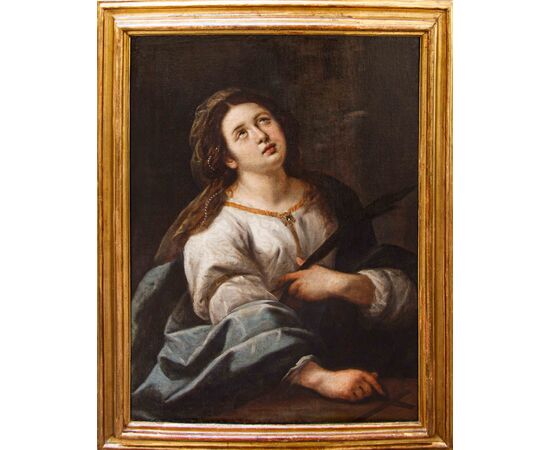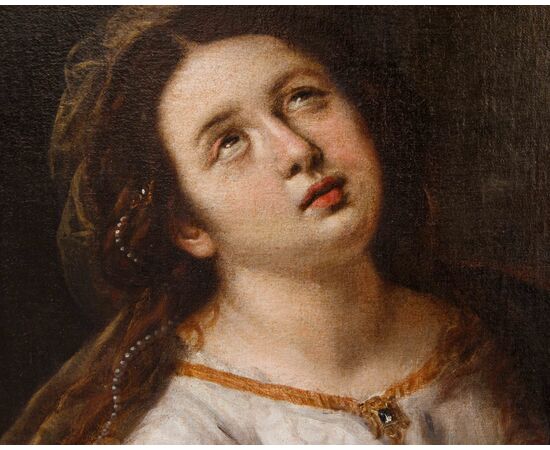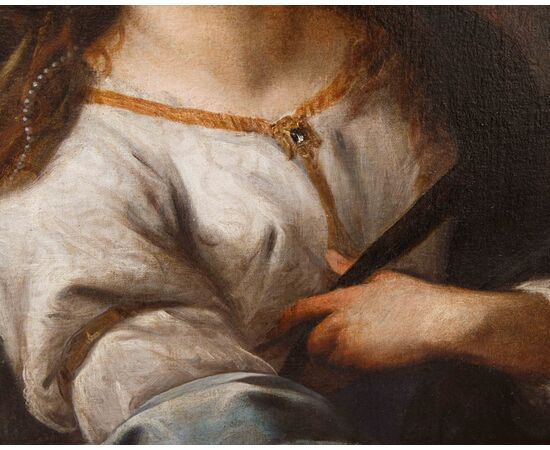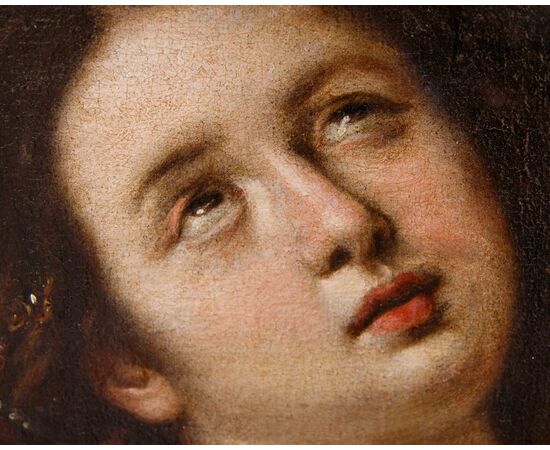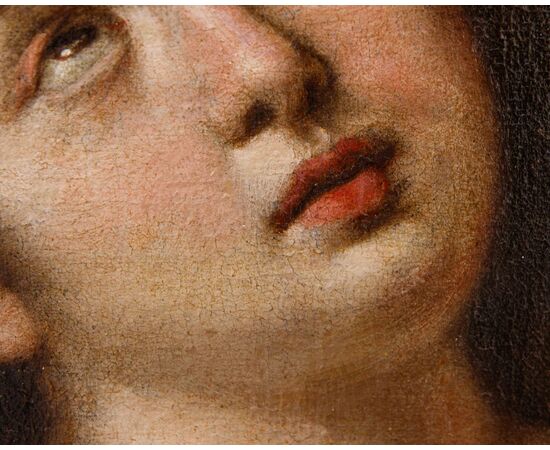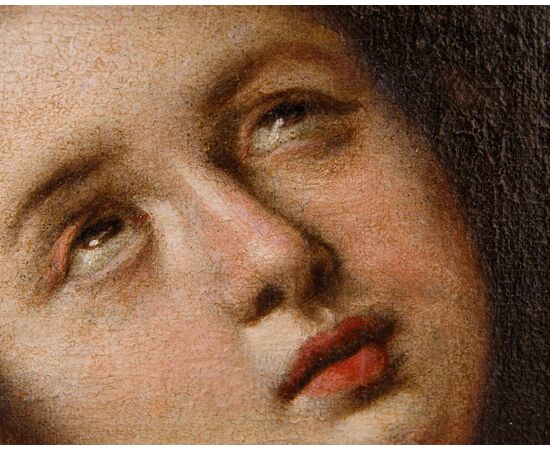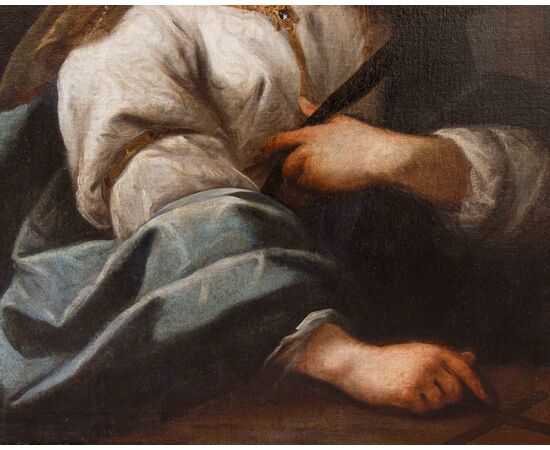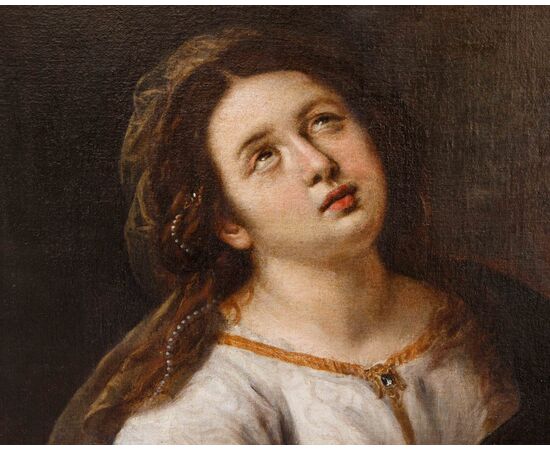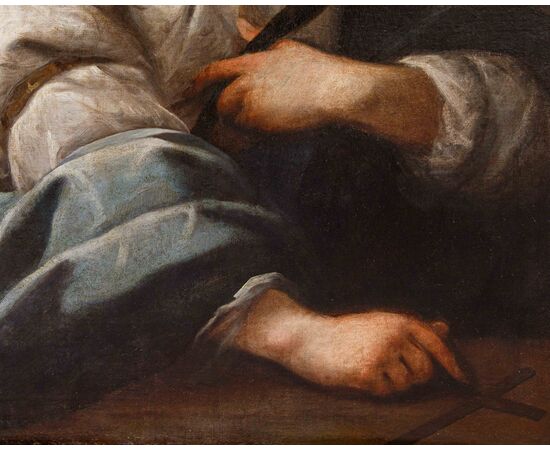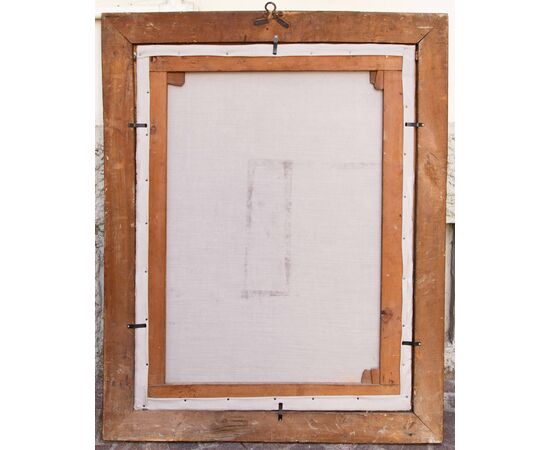Giuseppe Nuvolone (Milan, 1619 – 1703), Saint in Ecstasy
Giuseppe Nuvolone (Milan, 1619 – 1703)
Saint in Ecstasy
Oil on canvas, 97 x 73 cm
With frame, 113 x 90 cm
Provenance: Rome, private collection
Second son of the celebrated painter Panfilo and his wife Isabella, Giuseppe Nuvolone was born in Milan in 1619. Like his brother Carlo Francesco, he was often remembered, in contemporary and later documents, with the nickname of his father Panfilo. There is no well-defined information regarding his beginnings as a painter and his training, which must have taken place with his older brother Carlo Francesco. This is demonstrated by the oldest works that can be attributed to him with certainty, namely the Domestic Works of the Holy Family in S. Giorgio in Bregnano (1646) and the altarpiece with S. Francesco in ecstasy in S. Giorgio in Cornate d’Adda (1650), in which he demonstrates an unconditional adherence to the stylistic choices of his brother's workshop, so much so that, especially in these years, the distinction between the works of the two painters and the precise definition of their respective catalogues are often problematic. The contiguity with his brother is confirmed in the numerous undertakings carried out in collaboration, starting at least with the cycle of canvases and frescoes with Biblical Scenes of the chapel of the Savior of the sanctuary of the Beata Vergine of Vimercate (1648-1652) and the celebrated Self-portrait of the Nuvolone family of the Pinacoteca di Brera, created around the mid-century, in which Giuseppe is responsible for the three figures at the sides of the scene, including the self-portrait, in the act of playing a mandola. The focus on the role played by Giuseppe within the scope of this long tradition of collaboration finds an indispensable frame of reference in the paintings created in the same years by the painter independently, such as the decoration of the chapel of S. Antonio Abate in the collegiate church of S. Lorenzo in Chiavenna, whose altarpiece bears the date 1657, the altarpiece of the parish of Groppello d’Adda (1657), the Magdalene of the Museo civico of Novara (1655-1658) and the Cain and Abel of the basilica of S. Maria Maggiore in Bergamo, of 1659. Compared to the works of his brother Carlo Francesco, Giuseppe's corpus is distinguished by the marked propensity to characterize the figures in a more vigorous way and to introduce into the delicate typological repertoire of the family workshop more explicit expressive accentuations, which contribute to undermining the harmonious regularity of the faces. These stylistic prerogatives are also fully captured in Giuseppe's slightly later works, such as the large Madonna del Latte and devotees, formerly with the antiquarian Luzzetti in Florence (1661) and Ruth and Boaz, in a private collection (1662): two paintings that are also useful to highlight the narrative effectiveness of Giuseppe's painting and his ability to master large-scale representations. It is also by virtue of these qualities that the artist enjoyed, from those years onwards, a growing success, certainly favored by the disappearance of Carlo Francesco in 1661, which transformed him into the main disseminator of the successful 'Nuvolonian' manner: the growing popularity of the painter translates into a noticeable increase in illustrious commissions, such as those received from the Savoy family or the nobleman Bartolomeo Arese, who became president of the Senate of Milan in 1660. The participation in the lost series of canvases commissioned for the obsequies of King Philip IV in the Duomo of Milan (1665) and the execution of the Habsburg Allegory today in Palazzo Sormani in Milan, which has been proposed to be related to the ceremonies solicited by the passage in the Lombard capital, in 1666, of Margherita of Austria, future wife of Emperor Leopold I, should be read from this perspective. Between the sixties and the seventies, Giuseppe Nuvolone stayed in Rome and worked in various Lombard centers, first of all Cremona, the native city of his father Panfilo, and Brescia. Giuseppe's career, extensive and full of success, ended with his death in 1703; the painter passed on his profession to his sons Carlo, active mainly in Switzerland, Gerolamo and Antonio.
The representation of female figures in an ecstatic state proves to be frequent with regard to the entire pictorial production of the Nuvolone family and is channeled into a variously traveled strand, already from the first quarter of the seventeenth century, by the so-called Lombard pestanti: suffice it to think, in this perspective, of the evocative works of Francesco Del Cairo. This type is often present in the production of Giuseppe, as is denoted with regard to the Holy Martyr of the Accademia Carrara in Bergamo and the Saint Lucia belonging to the municipality of Brescia. The figure of our saint, probably identifiable as Margaret of Antioch, with her particular hairstyle enriched with pearls and with the palm of martyrdom in her hands, rendered with soft sensuality, finds clear comparisons in some works by Giuseppe Nuvolone, among which we remember, in addition to the aforementioned canvases of Bergamo and Brescia, the Magdalene comforted by an angel (formerly Finarte, Rome 1984, cf. Ferro, 2003, p. 426 n. 108b) or two different versions of Saint Ursula (location unknown, Ferro, 2003, p.426, n. 108d and private collection, Ferro, 2003, p. 427, n. 109c). Also very similar in pictorial execution, pose and workmanship of the garments is the figure of Saint Catherine, in the altarpiece of Saint Catherine and Saint Francis Xavier created by Giuseppe Nuvolone for the Company of Merchants of Oleggio (Novara) and now preserved in the parish church.

